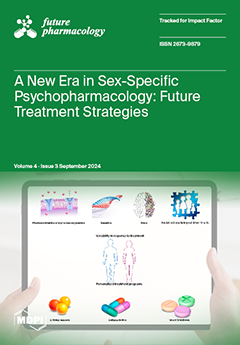Plants from the Myrtaceae family are known to contain considerable quantities of volatile compounds, ranging from oxygenated monoterpenes to hydrogenated sesquiterpenes, and others, which exhibit antimicrobial activity. One such plant includes
Syzygium aromaticum, which has been extensively used to treat a number
[...] Read more.
Plants from the Myrtaceae family are known to contain considerable quantities of volatile compounds, ranging from oxygenated monoterpenes to hydrogenated sesquiterpenes, and others, which exhibit antimicrobial activity. One such plant includes
Syzygium aromaticum, which has been extensively used to treat a number of disorders, including bacterial and fungal infections. Thus, the scientific validation of the essential oil (EO) of
Syzygium aromaticum vis-à-vis
Candida and
Cryptococcus species is valuable. To this end, the present study sought to investigate the antifungal activity of EO from
S. aromaticum (clove) leaves and flower buds against
Candida and
Cryptococcus species. The antioxidant activity of
S. aromaticum’s essential oils was also elucidated. The EO was extracted from fresh leaves and floral buds of
S. aromaticum using a Clevenger-type apparatus. The as-prepared essential oils were further evaluated for antifungal activity against
Candida and
Cryptococcus species using a microdilution method. The phytochemical analysis of the EOs was assessed by gas chromatography/mass spectrometry (GC-MS). Antioxidant activities of the EOs were evaluated using standard methods. As a result, the GC-MS analysis revealed the presence of volatile compounds, such as eugenol (87.08%), β-caryophyllene (6.40%) and acetyleugenol (4.45%) as the major constituents of EO from the flower buds, and eugenol (90.54%) and β-caryophyllene (8.42%) as the major components of the leaf’s EO. The eugenol-rich essential oils exhibited significant antifungal effects against
Candida species (common MIC value: 200 ppm) and
Cryptococcus neoformans (MIC value: 50 ppm), as well as antioxidant activity. Overall, essential oils of
S. aromaticum demonstrated antioxidant and antifungal effects, thus validating the ethnopharmacological use of this plant in the treatment of fungal infections. However, antifungal mechanisms of action, in-depth toxicity and in vivo experiments, and pharmacokinetics are warranted to support the use of this plant in ethnomedicine.
Full article




